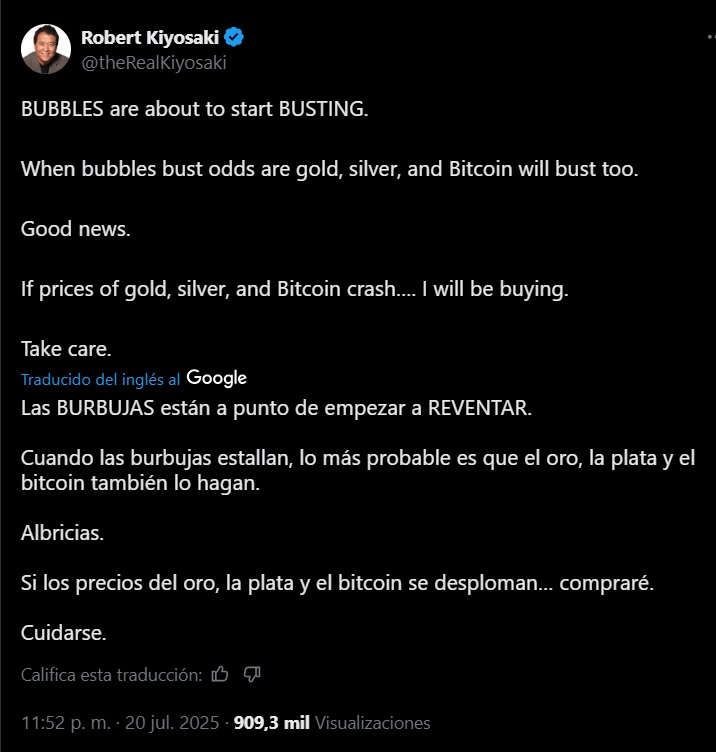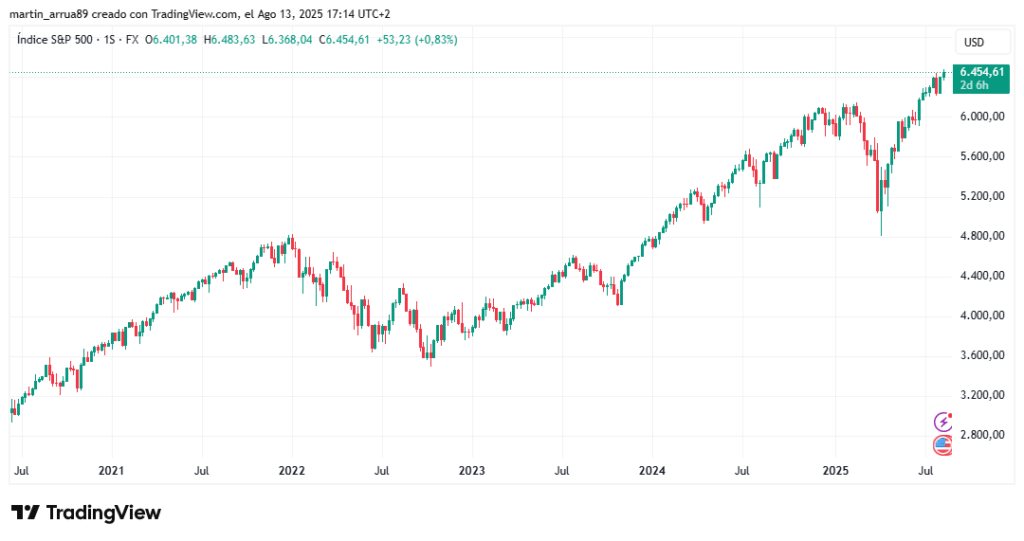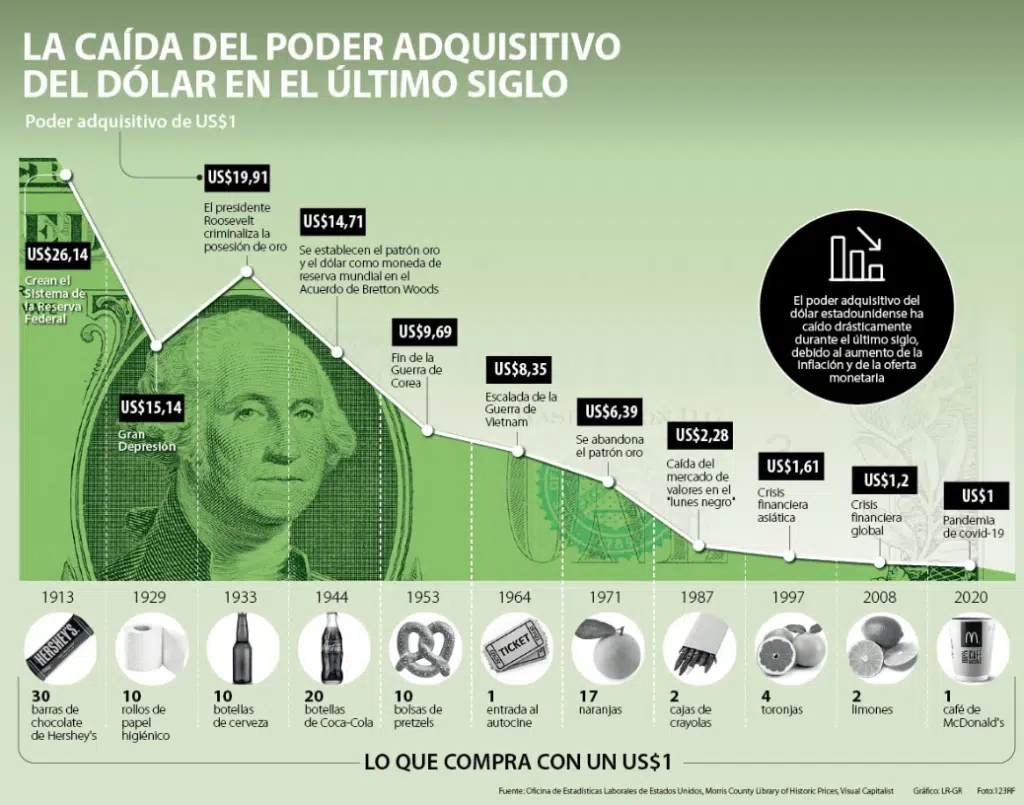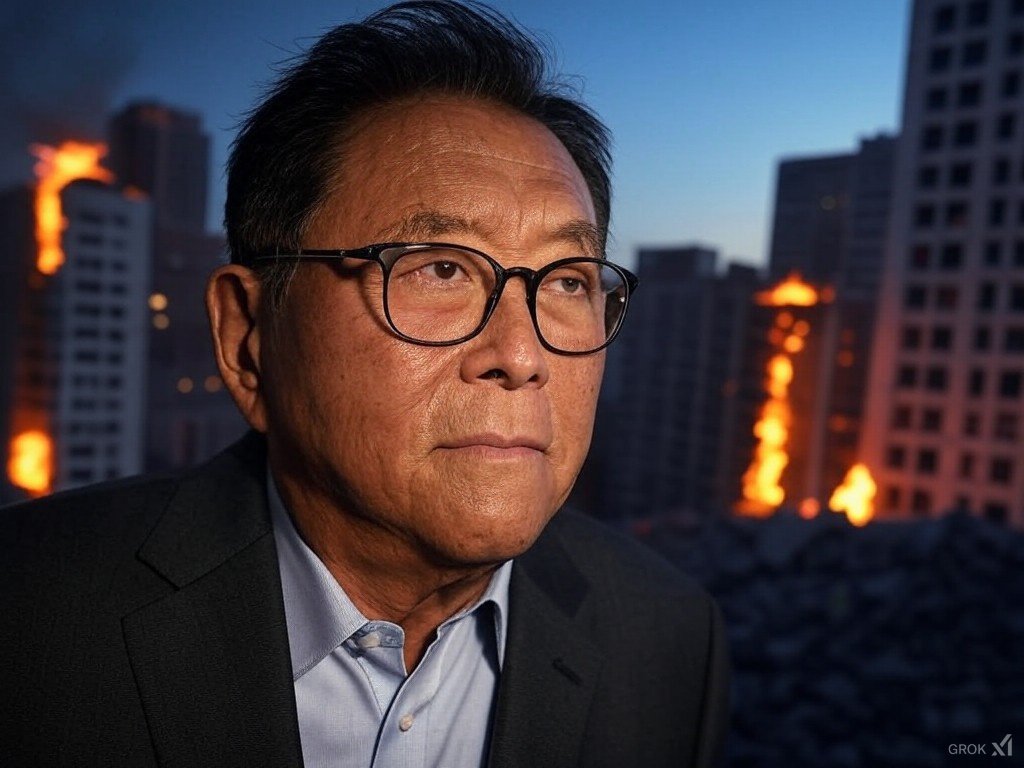The author of ‘Padre Rico, poor father’, is constant in his catastrophist predictions.
Statistically, it is likely that at some point, Kiyosaki will be right (or get close).
In Pedro’s children’s story and the wolf, a young farmer who cared for sheep alerted again and again about the arrival of a wolf that came to attack the flock. Every time the alarm sounded, the villagers came running to protect the farm but, not finding the animal, they began to doubt their warnings. Finally, the day the wolf arrived, nobody believed Pedro and, therefore, he could not protect the flock.
Similarly, Robert Kiyosaki, author of the book “Rico father, poor father”launches constant warnings that an economic collapse is just around the corner. Through his social networks, the investor asks his followers to “be careful”, although at this point the question that arises is whether these predictions reflect a real risk or are part of their usual alarmist style.
And the comparison with Pedro’s story and the wolf does not imply saying that Kiyosaki is a liar. Not at all! This reference seeks to illustrate how the constant repetition of warnings can have an opposite effect: instead of preventing, it ends up generating sensationalism to capture public attention.


For example, in another of his books, “Prophecy of Father Rico”published in 2013, Kiyosaki anticipated that in February 2025 a historical financial collapse would occur, of such magnitude that it could exceed the 2008 crisis, which originated in the subprime mortgages and affected both the United States and several countries of the European Union.
Kiyosaki himself described him as the “elderly Crash of the Stock Market in History “.
However, and as Cryptonoticia explained, the prophecy was not fulfilled. It is that, far from witnessing the greatest fall in history, the S&P 500, one of the most representative indexes of the US economy, has reached historical maximums in early 2025.
On the other hand, the sales of cars and houses, which he considers signs of crisis, do not reflect that generalized collapse. If there are low indicators, It is due to issues of local markets and not for a Crash Financial globally.


In 2023, the businessman had affirmed that the US dollar was about to “die” and that “billion dollars” would return to the United States, generating uncontrolled inflation. Until now, the projection was not fulfilled.
While it is true that apocalypse has not yet arrived, Kiyosaki is still an influential figureespecially for those looking for alternatives to the traditional financial system.
Hence the relevance of financial education and avoiding trusting the opinions of Influencers. Even in the case of a character recognized as Kiyosaki, the predictions are not infallible.
It is also important that each investor conducts their own analysis and research so as not to make decisions motivated by feelings.
Therefore, you have to take Kiyosaki warnings as such. That is, they are Caution signals that invite you to reflect on risk management and financial planningalthough that does not guarantee that the events that predicts to materialize.
In turn, it is true that there are signs that a collapse could be coming: The United States public debt grows at record levels (exceeds 37 billion dollars) and the courage and confidence of Fíat money is eroded by the intervention of politics.
The following infographic allows us to observe how the purchasing power of the dollar has fallen during the last century.


The background of the message is not bad and coincides with the thought of many investors, who see in Bitcoin (BTC) an asset of refuge against economic turbulence. This is because the currency created by Satoshi Nakamoto is decentralized and resistant to the censorship of governments.
Unlike Fíat money, BTC is an asset that is not devalued by inflation caused by emission and monetary policies. Its supply is limited to 21 million units and its broadcast is reduced every 4 years in an event known as Halving. Precisely, this shortage is what attracts large and small investors.
We are not saying that there are no signs, but let’s be sincere: all the drama and alarmism resembles a staging more to get the attention than a financial council.
Other analysts like Willy Woo or Henrik Zeberg have also warned that the signs of a mass crisis are activated but they base their warnings on data and economic models.
However, if this scenario materializes, so many times he anticipated it, surely Kiyosaki will be able to affirm: “I told them.” It will be more for a statistical issue (since once, some crisis will occur) than by the effectiveness of its analysis.
Like Pedro, the farmer who warned so many times about the arrival of the wolf until he finally happened and his alert stopped seeming exaggerated, Kiyosaki could find himself in a similar situation.


